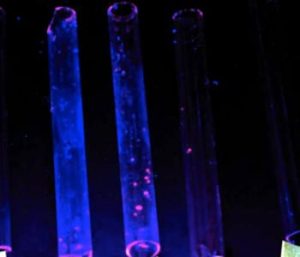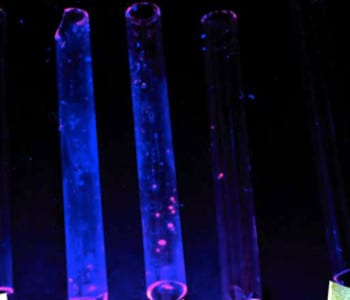
Tubes treated with the surface coating showed substantially reduced staining when exposed to a water-soluble blue dye.
The unwanted adhesion of liquid-based contaminants to surfaces critically affects the function and performance of materials and can have disastrous consequences such as infections caused by bacterial growth on medical equipment or ice adhesion on airplanes, pipes, and powerlines. Omniphobic coatings that repel a wide range of liquids can mitigate such issues.
Now, a Harvard research team has used a layer-by-layer technique to assemble a nanostructured surface coating infused with a fluorocarbon-based lubricant, forming a molecularly smooth interface capable of repelling various liquids and complex fluids such as crude oil and honey. The nanoscale size of the coating allows for transparency exceeding that of plain glass. The process is experimentally simple and can be used to coat a variety of materials and surface shapes, providing an efficient method to generate a wide range of non-fouling materials.

















